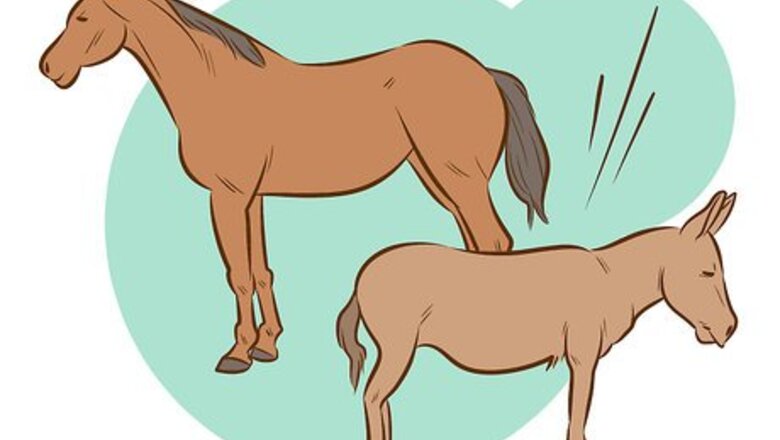
views
Knowing What to Expect from Donkey Riding

Learn the difference between riding donkeys and horses. Many think of donkeys as smaller, more docile version of horses, but in fact donkeys are their own species and have very different personalities and abilities. Riding a donkey is its own unique experience that's especially pleasurable when you don't have the same expectations you would for a horse. Donkeys are less responsive to training, so they don't have fancy gaits. A slow, plodding walk is the most comfortable gait for a donkey. Donkeys are extremely reliable and gentle, and aren't as finicky as horses. Donkeys are great for kids to ride. Dressage training is increasingly popular among donkey riders. Donkey dressage is similar to horse dressage but it showcases donkeys' unique traits and abilities.
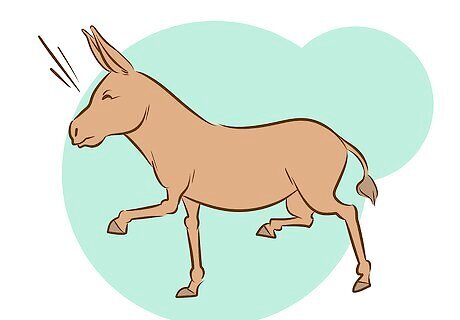
Know what situations are right for riding donkeys. Donkeys are hard workers with big energy reserves. Because they were originally desert animals, they're adept at moving through tough terrain without very many breaks. They like plenty of exercise and are usually game for a long trail ride or a simple walk around the property. Donkeys are wonderful to ride on long trails, where the pace is slow and steady. Because of their great endurance, they have often been used as pack animals and used to traverse tough hiking trails. Donkeys can help in work situations, especially with herding goats and sheep. They are excellent herders. For this reason, it's a good idea to always keep a fence between donkeys and other farm animals unless they're actively herding.

Understand donkeys’ limitations. The experience of riding a donkey is pleasant, but not necessarily exciting. Unlike horses, they won’t be interested in jumping logs or galloping across fields. If you try to encourage them to do so, they usually just stand still and won't budge, which is probably why they have a reputation for being stubborn. Donkeys have a shorter stride than horses and tend to move slowly. They aren't physically capable of performing feats of agility the way horses can. Donkeys like familiarity and get their reputation for stubbornness because they don’t react well to unfamiliar situations. They like to have time to consider a given situation, and hurrying them along doesn't do much good.
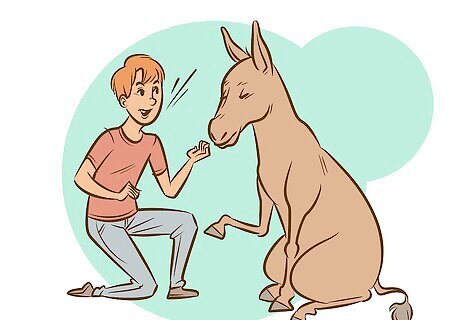
Get to know their training needs. Donkeys should be trained by someone familiar with their temperaments and abilities. Training a donkey is similar to training a horse, but since donkeys have different abilities, they need a trainer who knows what he or she is doing. Donkeys should first learn to be led on a halter, then how to carry a saddle and take riding commands.
Choosing a Donkey to Ride
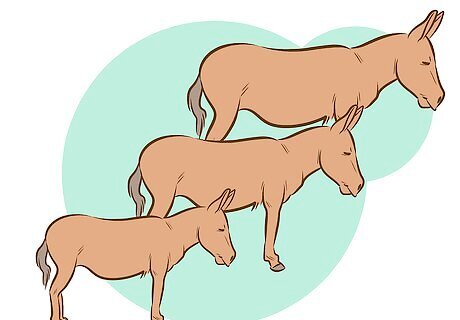
Find one that’s the right size. Donkeys are commonly too small to be ridden. It’s very important not to ride a donkey that’s too small to carry your weight, since that could injure the donkey. A good rule of thumb to follow is that a donkey can safely carry 20 percent of its body weight. Miniature donkeys are not suitable to be ridden, unless you want to have your toddler ride one under supervision. Mid-sized donkeys are fine for children, but as the children grow up they will need to find a larger donkey. Mammoth donkeys are large enough to carry adults.

Take sex and temperament into account. Like horses, donkeys’ temperaments differ according to their sex. Finding a donkey with a good riding temperament will have a big impact on the riding experience. Here are the three types of donkeys and their temperaments: Geldings are male donkeys that have been castrated. They tend to have a mild temperament well-suited to being ridden. Jennys are female donkeys. They usually have a gentle, domesticated temperament as well. Jacks are uncastrated males. They are typically too wild to ride.
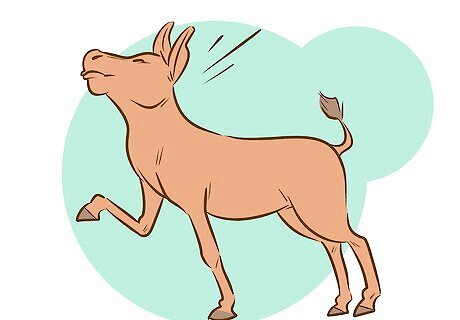
Make sure the donkey has received training. Many donkeys make great pets, but not all are cut out for being ridden. Find out whether the donkey was trained to carry a saddle and follow riding commands. Get a donkey that has been trained to be ridden, not just walked on a lead.
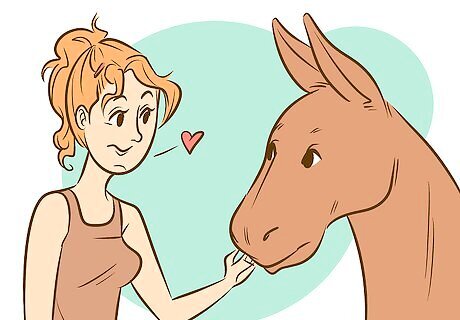
Find a good match for your personality and needs. Donkeys have a reputation for being stubborn, but really they just need time to assess each situation and decide how to respond. They’re deep thinkers. This can be frustrating when you’re on a donkey’s back and would like it to move forward. If you're planning to purchase a donkey spend time walking and riding the donkey to make sure it's a good fit. Patience is a virtue when it comes to riding donkeys. Try to gain an understanding of the donkey's personality so you can work as a team and have a much more pleasant ride together. If you’re not the patient type, you’ll need a donkey that’s exceptionally responsive. You may instead want to consider choosing a small horse or pony.
Ensuring a Smooth Ride
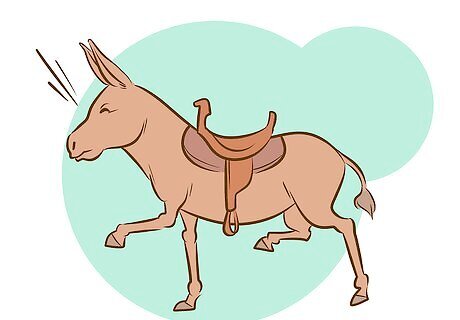
Use equipment made for donkeys. Donkeys’ bodies are structured differently from horses’ bodies. Get a saddle and other equipment made for donkeys or burros, rather than one for horses. Donkeys can carry a lot of weight, but their backs are wider than horses' backs, so the saddle construction is different. A saddle that doesn't fit correctly can lead to health problems for the donkey. Bits and other tack should also be fitted to your donkey's needs. Blinders are commonly used to keep donkeys focused on the path ahead, but some donkey trainers recommend against using them. If you want to use heavy saddle bags, have the donkey practice with them at home before setting off on a long trail ride.
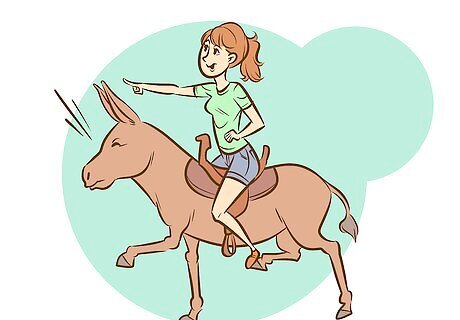
Learn to give a donkey riding commands. If you've never had riding lessons, it's a good idea to take some so you can learn the proper way to command a donkey for a smoother ride. The most important thing to remember is that you shouldn't try to make a donkey to do something it doesn't want to do. You must gently coax the donkey to keep moving instead of using force. Verbal commands and nonverbal commands like hand signals and touching the donkey are ways to let it know what you want it to do. Whipping and harsh kicking are ineffective, and will serve only to erode the trust you have with your donkey. Treat your donkey gently and patiently as you ride.

Take good care of your donkey. Make sure your donkey is healthy so he doesn’t get injured when you go for a ride. Donkeys need dry, warm shelter, proper feed and plenty of water, and attention to their hooves and teeth. Make sure you attend to the donkey's health before taking it out for a long ride. Donkeys' hooves must be kept dry, or they will begin to rot. Donkeys need to overnight in a dry shelter. If you're doing an overnight trail ride, make sure there's a dry shelter where the donkey can stay overnight. When it comes to food, donkeys need plenty of grass, and not much else. They are prone to getting overweight easily, so make sure the donkey is getting plenty of exercise.













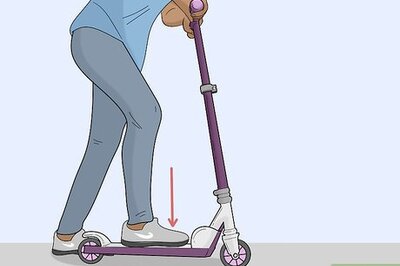






Comments
0 comment